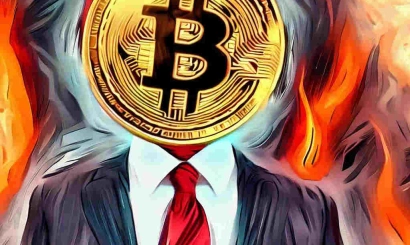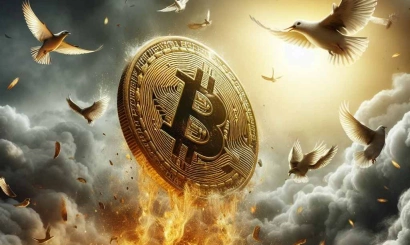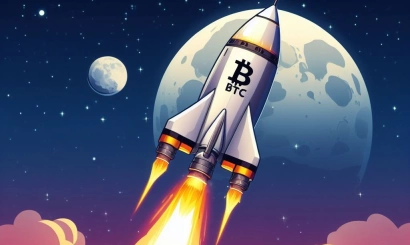The first tier usually includes the ten coins with the highest capitalization. Excluding stabelcoins (which are essentially tokens), we see full-fledged cryptocurrencies with their own blockchains in the first tier. As of October 25, the top 10 by market capitalization include Bitcoin, Ethereum, BNB, XRP, Cardano, Solana, Dogecoin and other coins. However, when assessing the reliability of an asset, it is also worth considering whether it has a solid base, including a stable, time-tested network and a large number of users. Therefore, I would not classify currencies such as Solana, Cardano, Dogecoin and Ripple as first tier.
Solana has been experiencing quite frequent network failures.
Dogecoin is a "meme" coin that reacts very sensitively to Ilon Musk's tweets, making it a rather manipulative asset.
Cardano network is not popular among developers of decentralized applications and in terms of TLV (total value locked) it currently ranks 32nd, strongly behind even currencies with a much smaller capitalization.
Ripple (XRP) stands apart because of its specifics and focus on the use in the banking sector. In addition, decentralization in this blockchain is very conditional.
Thus, BTC, ETH and BNB can be attributed to the first echelon. These are cryptocurrencies with high capitalization and actively working and growing blockchains. They are time-tested and trusted by the market.
The second tier consists of blockchain platforms whose creators have already presented working products with a clear concept to the market, but their lifespan and capitalization level are not yet sufficient to be in the first tier. Avalanche, Polkadot, Polygon, Tron, Atom, Cardano and other systems can be included in this category.
This group also includes older cryptocurrencies like Litecoin, Bitcoin Cash and others - those that topped the rankings in 2017-2018 and are still going strong. Despite their current relatively low capitalization, they should not be discounted and listed in the third category. The second echelon can also include tokens of promising projects (crypto exchanges, cryptocurrencies, oracles, DeFi systems, etc.), such as Chainlink, FTT, 1inch, Aave or Trust Wallet.
The third echelon includes coins and tokens of new projects that have not yet shown themselves to the fullest extent, as well as old platforms that have lost relevance and lost the lion's share of their capitalization. They should be considered solely as venture capital investments, because 80% of such projects are likely to cease to exist a few years after launch.
There is a perception that less-capitalized assets tend to be more volatile and have more growth potential. This is only partly true because there are examples of cryptocurrencies that are highly capitalized and have more volatility than other, less capitalized coins. For example, Ethereum with a capitalization of $157 billion shows standard deviations of 4.58% year-over-year, while BNB token with its capitalization of $43.8 billion shows only 3.09%.
How do you distinguish a promising project from a failing one?
There are several basic criteria to assess the prospects of a particular cryptocurrency.
First of all, it is necessary to understand whether the new product is needed by the market - whether it solves some problem, whether it has advantages over similar developments. If the project is an "empty shell" (for example, another clone of Ethereum without any innovations), it is likely to be forgotten about soon.
It is worth inquiring about the personalities of the project creators and the company's management for their experience and competence. Experience in the field of information technology and/or financial markets will be key.
It is imperative to examine the whitepaper of the new token and find out how much information it contains. The document must be specific, including as much information about the issuing company as possible. If there is nothing but vague wording, you should not trust the project.
Attention should be paid to the support of the project by investment funds and large participants in the crypto market. This is not a mandatory point, but it is still important for a private investor to know that the asset is kept in sight by larger players.
It is necessary to evaluate tokenomics and the business model, to determine what will serve as a trigger for coin value growth and at what point, to pay attention to the "combustion" mode of coins and to the issuance model as a whole.
Another important criterion is the distribution of tokens at issuance. It is important to understand whether they will be concentrated in one or two wallets.
We recommend to take a closer look at the work of the project's marketers. Of course, there are a lot of decent platforms that do not particularly try to "sell" themselves, staking on the quality of their product. And yet, competent marketing is very important for the success of the cryptocurrency.
It does not hurt to monitor the work of the development team and keep track of product updates on GitHub and similar resources. Red flag - the absence of changes and new versions of the code for a long time.
It is also useful to check the commission revenue of miners and validators from transactions. If it grows over time - that's a good sign. (This metric is not relevant for tokens, as they do not have their own blockchain.)
Traders are interested in markets that are liquid yet quite volatile. Large altcoins are great for this purpose. Smaller tokens are bought up as venture capital investments. "Whales" can afford to invest at the earliest stage of the initial offering because they have sufficient capital.
Whales, shrimp and how they affect the crypto market
When choosing a token to invest in, you can follow the actions of the big players, but you should consider that they have an interest in hiding their activity or misleading other market participants in order to get enough counterparties for transactions in large volumes. It is possible to track general trends and distribution of coins by wallets. However, it is very difficult, and in some cases impossible, to find out what wallet belongs to this or that owner - which means that large market participants can distribute their funds to small wallets in order not to attract the attention of on-chain analytics fans.
Observation will not be superfluous, but for the completeness of the picture it is necessary to compare the movements in the blockchain with other factors.
More news about cryptocurrencies you will find in our telegram channel soft4bro.com
Author: soft4bro






